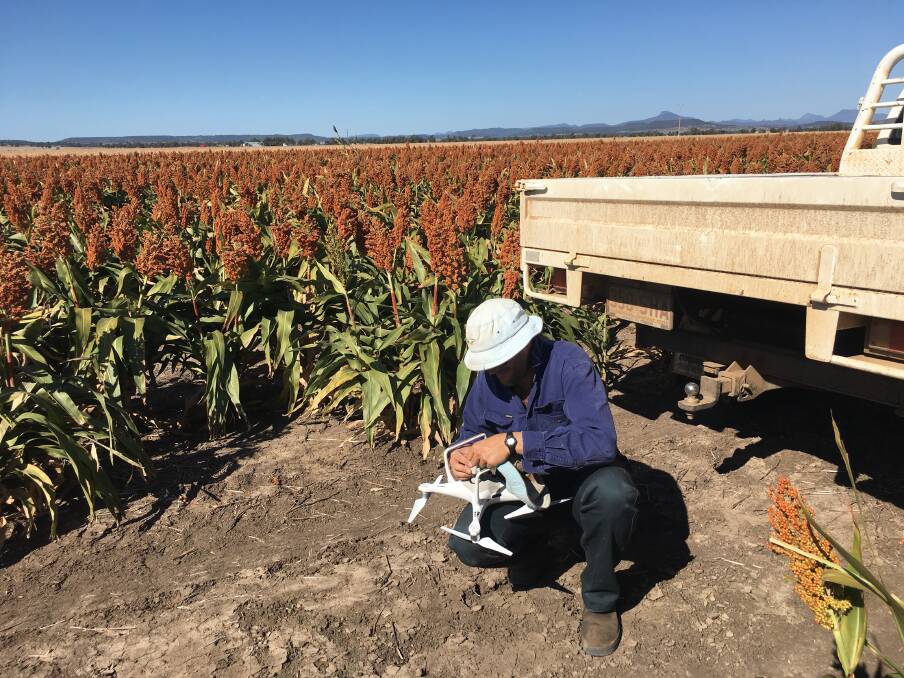
To exceed $100 billion in farm gate output by 2030 Australia needs to unlock innovation by taking advantage of new technologies.
Subscribe now for unlimited access to all our agricultural news
across the nation
or signup to continue reading
This will require effective partnerships between major technology companies, entrepreneurs and Australian farmers, and while innovation pathways for existing genetic, chemical and machinery technology are well established, new pathways will need to be forged particularly when it comes to digital and transformative technologies.
Farmers2Founders co-founder and AgThentic chief executive officer Sarah Nolet believes the key to successful creation and adoption of new technologies is to ensure companies work closely with farmers from the ground level.
Ms Nolet said problems occur when there is a disconnect between the people developing the technologies and the end user.
"They might have amazing skills that we definitely want in the industry, such as robotics, artificial intelligence or machine learning, but maybe they haven't spent time on farms and they don't understand the farming systems and the workflows," she said.
"Stuff gets developed, but it is more focused on the technology and the product then it is on the user and solutions they need. That can be really frustrating."

Ms Nolet said the the most common problem with new technologies is the sheer choice of product on the market, meaning a farmer might invest time, effort and energy into choosing, learning and using a product, which may not be successful in the long term.
"In industries that move really fast and are driven by technology, there are a lot of copy-cat solutions," she said.
"That's good because eventually the market sorts itself out and there is a winner takes all dynamic, where you have the platform or technology that emerges and everyone starts to use.
"However in the meantime it can be really confusing and frustrating, farmer might see multiple products that all look like they do the same thing and it can be really hard to figure out which product to choose."
Strategic approach
Ms Nolet said farmers should adopt a strategic approach when it came to adopting technology.
"They should start with what problem they are trying to solve, rather than which technology they want to adopt," she said.
"Talking to your agronomist or consultant, talking to your accountant, your staff, having a team meeting and discussing what are the limitations, what are we trying to solve this season, what could move the needle on yield and what could reduce costs or what could really help us to be more resilient if the drought continues.
"Understand the key limitations and then look for solutions, start with the problem first, not the technology."
Ms Nolet said farmers should also look for technologies which fit their existing workflows and timing of operations.
"A lot of the frustration with new technologies is when they create more work or don't fit when a farmer does things, checking something fits into your system is really important."
Cut the hype
Ms Nolet said a significant difference between technology pathways for digital agtech as opposed to the more physical machinery and equipment technologies.
"When you are a producer looking at these technologies it is pretty different in the digital space, because the product will change rapidly over time," she said.
"It is really easy to deploy new updates for digital technologies, that means you need to evaluate where the technology is now as well as where it is going.
"This means you have to look at the team behind the product, because the products might look really similar but you will want to back or work with a company where the team is also impressive, responsive, humble and who want to come out and learn about agriculture and understand the problem.
"Someone who understands the need for local support, having someone you can call rather than a chatbot or email address, they are actually there helping you and willing to listen to your feedback.
"Someone who doesn't over-promise and under-deliver."
Farmers2Founders
Ms Nolet said Agthentic was involved in the agtech ecosystem at a number of levels, working both as an advisory service and venture capital investor for emerging technology companies as well as with farmers through the Farmers2Founders program.
Funded by a number of the Research Development Corporations, the Farmers2Founders program aims to expose farmers to the latest information on emerging agriculture, food and fibre technologies, supporting farmers to transform their businesses both on-farm and through post farm-gate innovations
"There are two really big opportunities for producers," she said.
"Farmers are already developing things on their farm, so one of the things we do is help them to commercialise those products that they have already invented or put to work on their farm," she said.
"The second is engaging with technology providers to help influence how the solutions are being built and making sure they are fit for purpose."
Ms Nolet said beyond being an inventor or customer of new technologies there was a wide range of ways farmers could be involved in the digital agtech space.
"Whether it is as an investor, an adviser or influencer of a solution, the digital world provides this whole space of opportunities," she said.
Agtech opportunity
Ms Nolet said Australia's geography and market size had a an affect on its attractiveness to technology developers and investors.
"There is both an opportunity and a risk depending on how we choose to address the problem," she said.
"Australia is a small market and things are done differently here, there are different farming systems and different technology maturities, so maybe people overlook Australia or develop products for larger markets.
"But I would say there is more opportunity. Australia is seen as a great place to develop technology and commercialise and trial it.
"The challenge is almost one of mindset, if we are just focusing on the Australian agtech companies and the ones that are far enough along, we are missing this whole other world of other situations that are being developed and could be trialled or accessed here."
Ms Nolet said Australia's significant climate and farming system variability coupled with a low subsidy market meats its farmers were innovative and resilient, traits technology developers prize.
"People know that if a solution is taken up in Australia it really works," she said.
"We have counter-seasonal testing opportunities to North America and many different types of climates and crop types to test on."


